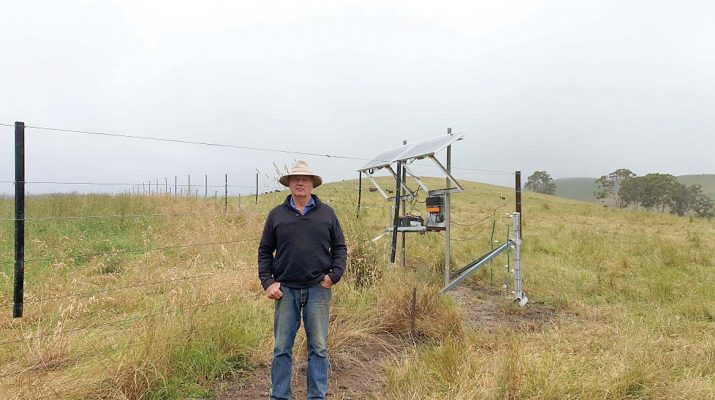Keeping ongoing wild dog control front and centre in Victoria’s Gippsland district has been a decade long concern for cattle producer Ken Skews.
Ken was among the producers spearheading the formation of the Ensay Community Wild Dog Control Group which coined the phrase: “Get sheep back to Ensay”.
It has been a long journey for him and his wife Kym as they lost their sheep enterprise along the way, but Ken believes keeping that on-ground industry investment strong is vital, and he has worked hard to influence departmental policy over the years for the benefit of landholders.
He recently retrofitted an existing wild dog exclusion fence (four hot wires and three plain) with three wires on top to exclude feral deer and kangaroos from neighbouring crown land.
“Our wild dog problem is now almost non-existent,” he said.
“Ten years ago, nobody talked about anything but dogs, even the weeds were pushed off the agenda.
“It was nothing to see a pack of wild dogs wandering across our property in the middle of the day. They were all over the district.
“We were running sheep but in the end we gave up as we couldn’t keep them alive.”
Ken, along with other Gippsland producers, tell their stories on a series of videos on exclusion fencing and mental well-being produced by the Department of Environment, Land, Water and Planning under the DeFence project.
The DeFence project involved the National Wild Dog Action Plan, East Gippsland Shire Council, East Gippsland Landcare, Australian Wool Innovation and Department Environment, Land, Water and Planning.
The mental anguish over dealing with maimed and dead stock remains raw for Ken.
“It does your head in – I would go out at dusk, dawn, midnight, 3am, and anytime and never see a wild dog, but come back in the morning and there would be dead lambs.
“We lost over 100 marked lambs in a six-week period…the dogs were that bold.
“When they were at their worst, the only way we could keep the sheep alive was to bring them into the orchard at the back of the house each night.”
Ken worked with the professional wild dog controllers on baiting and trapping.
Frustration over the lack of baiting on crown land and follow-up on reporting activity saw Ken and other producers, as part of the Ensay Community Wild Dog Action Group, take the issue directly to the Minister for Agriculture to enact change.
“These were two important breakthroughs for us. We were really up against it as basically it came down to if you had a good dogman, you were OK,” he said.
“There are five landholders along the interface here and we have 33 GPS-marked baiting sites along the edge of the bush to keep the system in place.”
Although many landholders now have exclusion fencing and/or switched to cattle, Ken continues to keep wild dog control front and centre in the district.
“We are all still actively baiting, and our wild dog controller keeps us informed on wild dog activity,” he said.
“There haven’t been any wild dog attacks around here for a long time but there is evidence of activity not far out in the bush.”
He feels producers must constantly defend their social licence around wild dog control and biodiversity.
“There is a mindset among some of the people critical of baiting wild dogs that farmers want to kill all the dogs – we don’t want to kill all the wild dogs, we just don’t want the dogs to come onto our properties killing our stock.”

